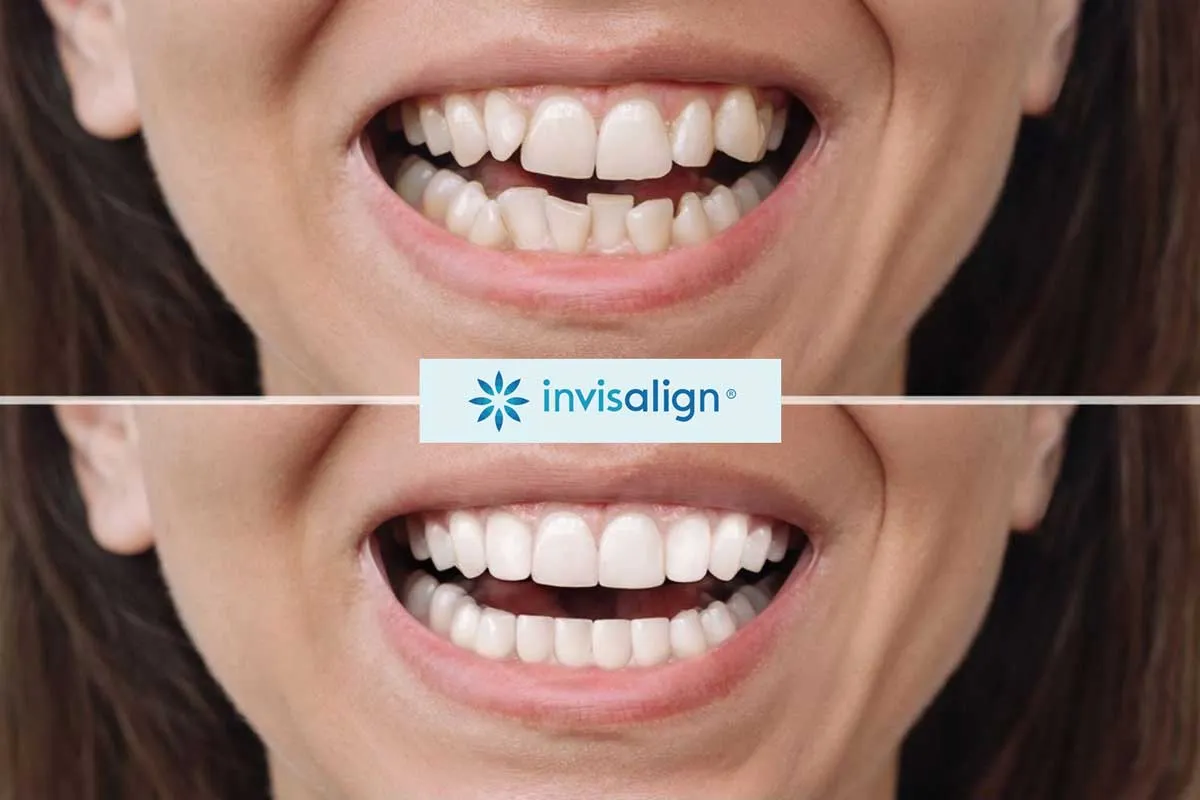
Invisalign
Invisalign is an orthodontic system that uses a series of custom-made, clear, removable aligners to gradually shift teeth into their ideal position. Unlike traditional fixed braces (metal brackets and wires), Invisalign allows discreet treatment and more freedom for eating, brushing and flossing.
How does the treatment work?
Here’s a step-by-step overview of what to expect:
- Consultation & digital scan – We assess your teeth, bite and overall oral health, then take a digital scan (or mould/impression) to generate a 3D treatment plan.
- Custom aligner fabrication – Based on the plan, a series of aligners is manufactured. Each aligner is slightly different, designed to move your teeth gently over time.
- Wearing the aligners – You’ll wear each aligner for about 1-2 weeks (depending on the case) before moving on to the next. Aligners should be worn for around 20-22 hours per day, only removing them for eating, drinking (other than water), brushing and flossing.
- Progress checks – We’ll have periodic check-ups to monitor progress and make any adjustments if needed.
- Retention phase – After the active alignment phase, retainers are typically used to maintain the results and prevent relapse.
What issues can Invisalign treat?
Invisalign is suitable for many orthodontic concerns, particularly mild to moderate cases. These include:
- Crowded teeth
- Gaps between teeth
- Some bite issues (e.g., overbite, underbite, crossbite)
However, for very complex skeletal or dental cases (for example, needing significant jaw surgery, or very large movements) traditional braces or combined treatments may still be more appropriate.
Key benefits
- Discreet appearance – The clear aligners are much less visible than metal braces.
- Removable – You can take them out to eat, drink, brush and floss, which improves hygiene and comfort.
- Comfort – No brackets or wires means less irritation to cheeks and gums in many cases.
- Predictability & technology-driven planning – The digital 3D planning helps visualise the treatment and understand anticipated results.
- Fewer dietary restrictions compared to braces, since you remove the aligners to eat.
What to expect: timeline, comfort & commitment
- Timeline – The exact duration depends on the complexity of your case. Many patients see noticeable progress after 3-6 months, and full treatment may often finish around 6-12 months (or longer for more complex cases).
- Comfort / sensations – Gently moving the teeth may cause a feeling of pressure when a new aligner is worn. Discomfort is usually mild and temporary.
- Commitment is key – Success depends on wearing the aligners as advised (20-22 hrs/day) and attending check-ups. Because they’re removable, if they’re left out too long treatment will be less effective or take longer.
Are there any disadvantages or limitations?
- Because Invisalign aligners are removable, their effectiveness depends heavily on patient compliance. If wear time is insufficient, treatment may stall or relapse may occur.
- Some very complex orthodontic or skeletal cases may be less suited to this system and may require traditional braces or additional appliances.
- Aligners must be cleaned and the teeth cleaned before reinserting the aligner — food or drink residues can lead to staining or hygiene issues.
- In very specific movements (e.g., large rotational movements of certain teeth) extra attachments (small “buttons”) or refinements may be needed.
Aftercare & maintaining your new smile
- At the end of the active phase, retention is essential. Whether via clear retainers, fixed retainers or night-wear options, we’ll advise what’s best for your smile.
- Continue good oral hygiene: brush and floss regularly, avoid habits that might shift teeth (e.g., nail-biting, using teeth as tools)
- Attend routine check-ups as recommended to monitor stability.
Is Invisalign right for you?
You’re a strong candidate if you:
- Want a more discrete orthodontic treatment option
- Are willing and able to wear aligners 20-22 hrs/day
- Have mild to moderate alignment or bite issues
- Have good oral health (no untreated cavities or gum disease)
You might need reconsideration or alternative treatment if you:
- Have very complex jaw or skeletal discrepancies
- Find it difficult to commit to wearing aligners consistently
- Have significant missing dentition, large restorations, or need combined orthodontic-surgical treatments
Be it the services we provide, the way we clearly explain treatment procedures, or in the environment we have created, Tupsley Dental Practice is all about pleasing patients and giving them plenty to smile about.
Find Us
Practice address
The Cedars
60 Aylestone Hill
Hereford
HR1 1HXEmail
info@tupsleydentalpractice.co.uk
Phone
01432 267 388
